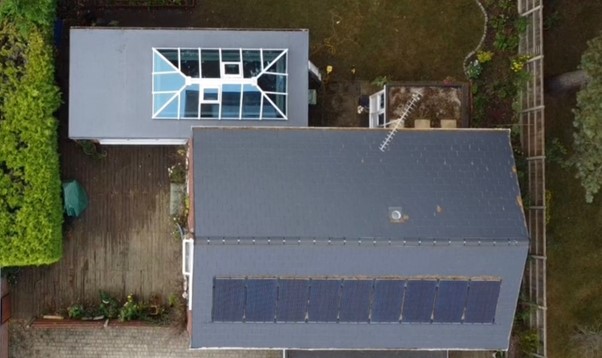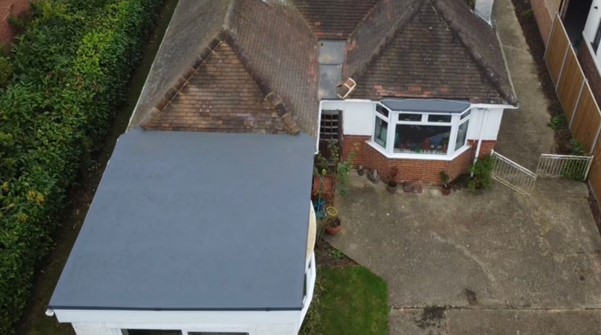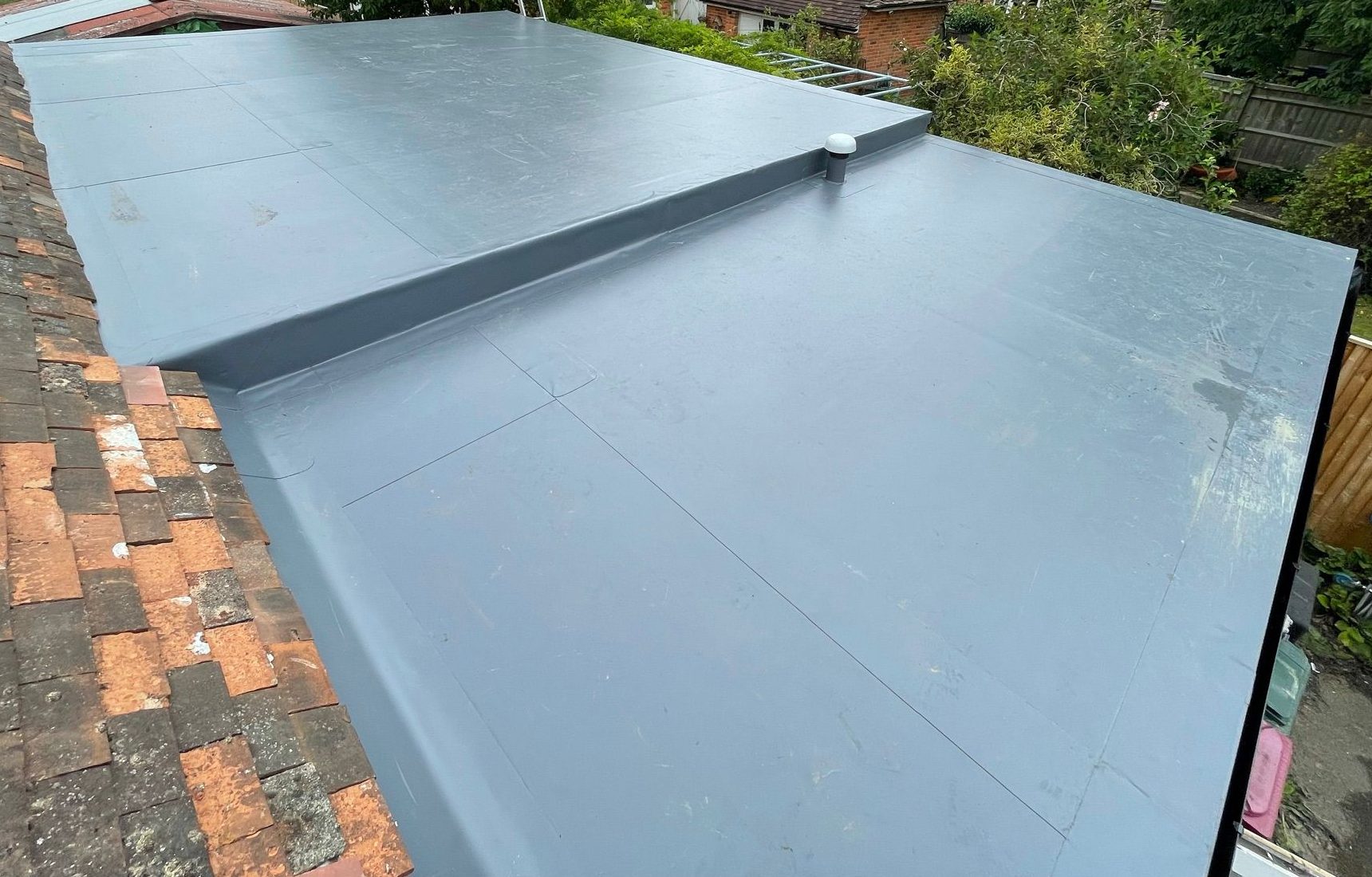Roofing Matters Group is highly regarded as one of the leading single ply flat roof specialists in Berkshire, having a partnership with the biggest flat roofing suppliers Sika, Danosa, Sarnafil and Woflin with their owner Daryl Cooke being a certified installer for all these products.
Flat roofing systems are becoming more and more desirable. While in the past it was primarily seen simply as a great option for garages and extensions, today people are installing them to create eco-friendly green roofs or additional outdoor living space.

(One of Roofing Matters Group client’s property)
Flat roof renewals are one of Roofing Matters Groups most requested roofing service, they offer both single ply membranes and felt flat roof systems which you can check out on their website here. We are going to go through the benefits of each of these roofing systems so you can better decide which to go for.
What is a single ply flat roofing system?
Single ply is a flat, synthetic polymer based roofing material that provides a waterproofing layer in a single sheet. Usually supplied in rolls, the material is either entirely homogeneous or contains a reinforcement layer. Sealed at the joints with heat, adhesive or mechanical means, it can be adhered, mechanically fixed and/or ballasted into flat, pitched or green roof systems. Single ply roofs are lightweight, flexible, cost effective, swift to install and safe, which makes them increasingly popular for both new build and refurbishment projects.
Pros of a flat roof system:
- Up to a 50-year life expectancy.
- A well-managed sector with its own Trade Association (SPRA)
- Suitable for new build and refurbishment applications
- Suitable for flat, wave form, cupolas etc
- Low capital cost and cost in use
- Safe, rapid and clean installation
- Some products available in a wide range of RAL colours
- Some products suitable for cost-effective alternative to metal roofing
- Simple to repair and modify
- Suitable for photovoltaic system installation
- Variety of sustainability characteristics including zero life cycle impact.

(One of Roofing Matters Group client’s property)
What is a felt flat roofing system?
Felt flat roofs have been the go-to solution flat roofing system for a long time. Built up felt roofing consists of two to three layers of bitumen sheet that have been bonded together using either hot bitumen or adhesive.
A modern version of felt flat roofing is a 3-layer membrane system that will give a more watertight system than 2 layers. In the traditional ‘pour and roll’ process, bitumen is supplied in blocks, broken up and heated in a boiler until molten. Once at the correct temperature, it is ladled into a bucket and poured hot onto the deck, insulation, or lower layer of the membrane. Layers of membrane are rolled into it. Felts can be easily sourced as it’s widely popular. If fixed properly, they can prove to be a very strong flat roofing system.
Pros and cons of a felt roof system:
- Felts are very versatile and can fit into most roofing structures regardless of its size and shape.
- You could also source them in various colours that matches your environment.
- The felt membranes are lightweight and can easily fit into a range of roofing structures.
- Compared to other roofing membranes felt roofs are cheaper to install, maintain and repair should they get damaged.
- If your felt roof should get damaged, it can be repaired or patched quite easily and cheaply.
- One of the drawbacks of felt roofing is that requires constant maintenance.
- Felts are comparatively more prone to damages caused by extreme weather conditions.
Conclusion
Overall, felt roofing can be a good option for flat roofed buildings in a range of sectors including residential and commercial roofing projects. It is waterproof, weatherproof and very cheap to install, replace as well as repair. Although, despite the higher installation costs, a single ply roofing system seems to be a much more viable choice. However, the recommendation could also vary based on your individual requirements.
If you would like to get in contact with Roofing Matters Group, you can get in touch with the team here and they can arrange for Daryl, to provide you a free quotation.




